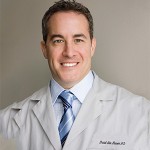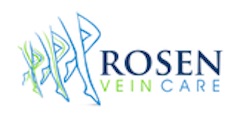Advancements in medicine over the past few decades relating to the care of chronic vein disease have led to less invasive means of achieving great outcomes for patients.
Surgical stripping used to be the mainstay of treating superficial vein disease. The first breakthrough that led to a shift away from invasive surgery was the use of endovascular, ultrasound-guided techniques. Other than sclerotherapy injections, newer techniques employed devices that “heat-sealed” veins closed from the inside. These included radiofrequency catheters and specialized lasers. Over the course of the past decade, these techniques have proven to be safe, effective and well tolerated.
Though discomfort is relatively minimal during these heat-based procedures, it mainly stems from the need to place a dilute local anesthetic (tumescent) solution around the entire length of the veins being treated. So, ironically, it’s the numbing medicine that doctors use to alleviate discomfort that causes patients to feel discomfort (though not too much).
Newer, state-of-the-art techniques are now available to patients that are even less invasive and require much less numbing medicine — almost none at all — to achieve similar outcomes. These non-thermal, non-tumescent (NTNT), FDA-approved techniques could be called “cutting edge” except that they don’t really involve cutting. Instead, it would be more appropriate to call them “blunting-edge” technologies.
One such technique is mechanical occlusion with chemical assist (MOCA or Clarivein®). Instead of heat from a laser, veins are closed by injecting a chemical through a catheter combined with a specialized, blunt wire that rotates rapidly, all under ultrasound guidance. To the patient, it feels like a gentle vibration. None of the patients I have performed the Clarivein® procedure on have complained of pain. The procedure is safe, effective (about the same as with lasers) and comfortable — a winning combination.
A second recently approved method is called VenaSeal®. This revolutionary “super glue” is a special formulation for use in veins. Again, no need for tumescent anesthetic means minimal associated discomfort. This technique has demonstrated to be safe and effective to a similar degree as thermal ablation. One additional potential “plus” is that patients may not be required to wear compression stockings after VenaSeal®, making the procedure more appealing for patients in the summer and for those living in warmer climates. The cold winter months are the perfect time to discover these state-of-the-art treatment options and get your legs ready for next “shorts season”!
To discover if Clarivein® or VenaSeal® may be right for you, schedule your consultation appointment with Dr. Rosen today.
RosenVeinCare
1535 Lake Cook Road
Suite 401
Northbrook
847-272-8346



